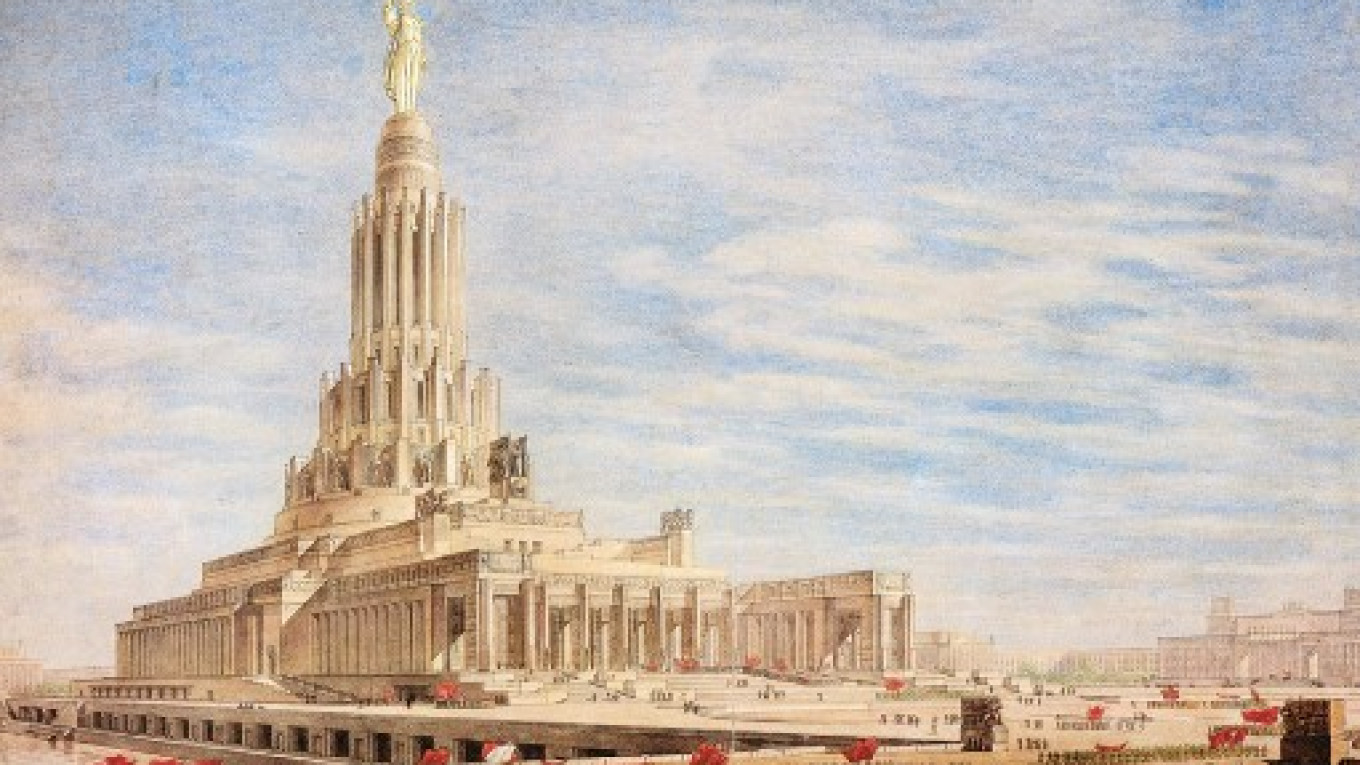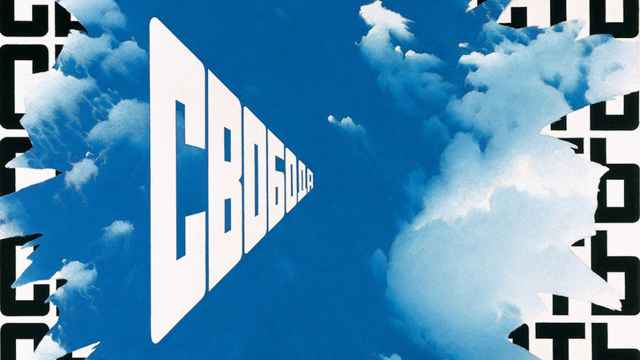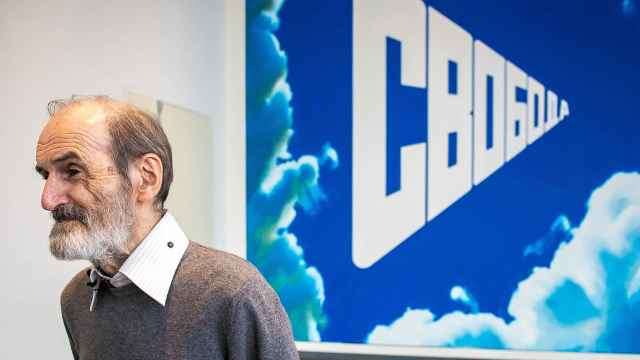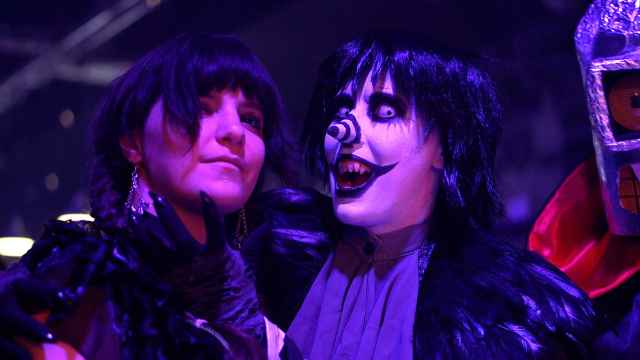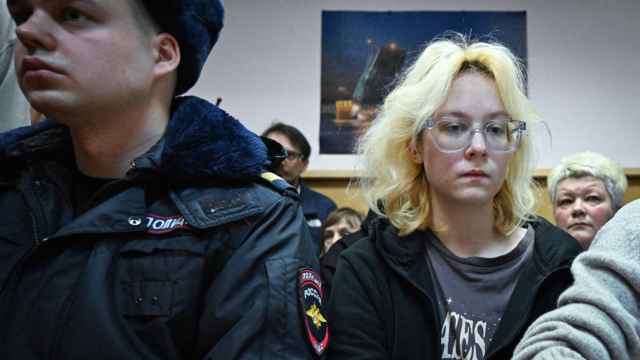Anyone who has strolled along the banks of the Moscow River in the center of Russia’s capital will likely be familiar with the stolid and rather intimidating Soviet edifice sitting on the western tip of Bolotny island across a stretch of river from the Kremlin. This is the House on the Embankment — Dom na Naberezhnoi — one-time home, or rather fortress, of the Soviet elite.
What is likely to be less familiar is the life of the man who created it: Boris Mikhailovich Iofan. It is his story that Deyan Sudjic recounts in "Stalin’s Architect: Power and Survival in Moscow." In just under 300 pages, Sudjic takes the reader from Iofan’s birth in the Silver Age of the Russian Empire to his death in the midst of Brezhnev-era stagnation, charting the architect’s tumultuous — and, more often than not, uncomfortably close — relationship with the highest echelons of Soviet power.
The book is chronological, with the first two chapters covering Iofan’s early life from his childhood in Odesa to his stint in the Italian Communist Party. From the very beginning, Sudjic shows, Iofan was willing to make compromises in order to survive. Born Borukh Solomonovich Iofan, the son of “respectable middle [class]” Jews changed his name to the Slavic-sounding “Boris Mikhailovich” in response to “Russia’s vicious anti-Semitism [...] as well as a reflection of his embrace of militant secularism.”
The next three chapters take us through Iofan’s return from Italy to Moscow, charting his ascendance from talented but relatively unknown young architect to the Generalissimo’s architect of choice, tasked with designing and building the “Vatican of Socialism.” In the final two chapters, Sudjic illustrates Iofan’s rather ignoble decline from the go-to architect of the Soviet elite to a relic of Stalinist excess who “put most of his energy into making increasingly forlorn submissions for competitions that he never won.”
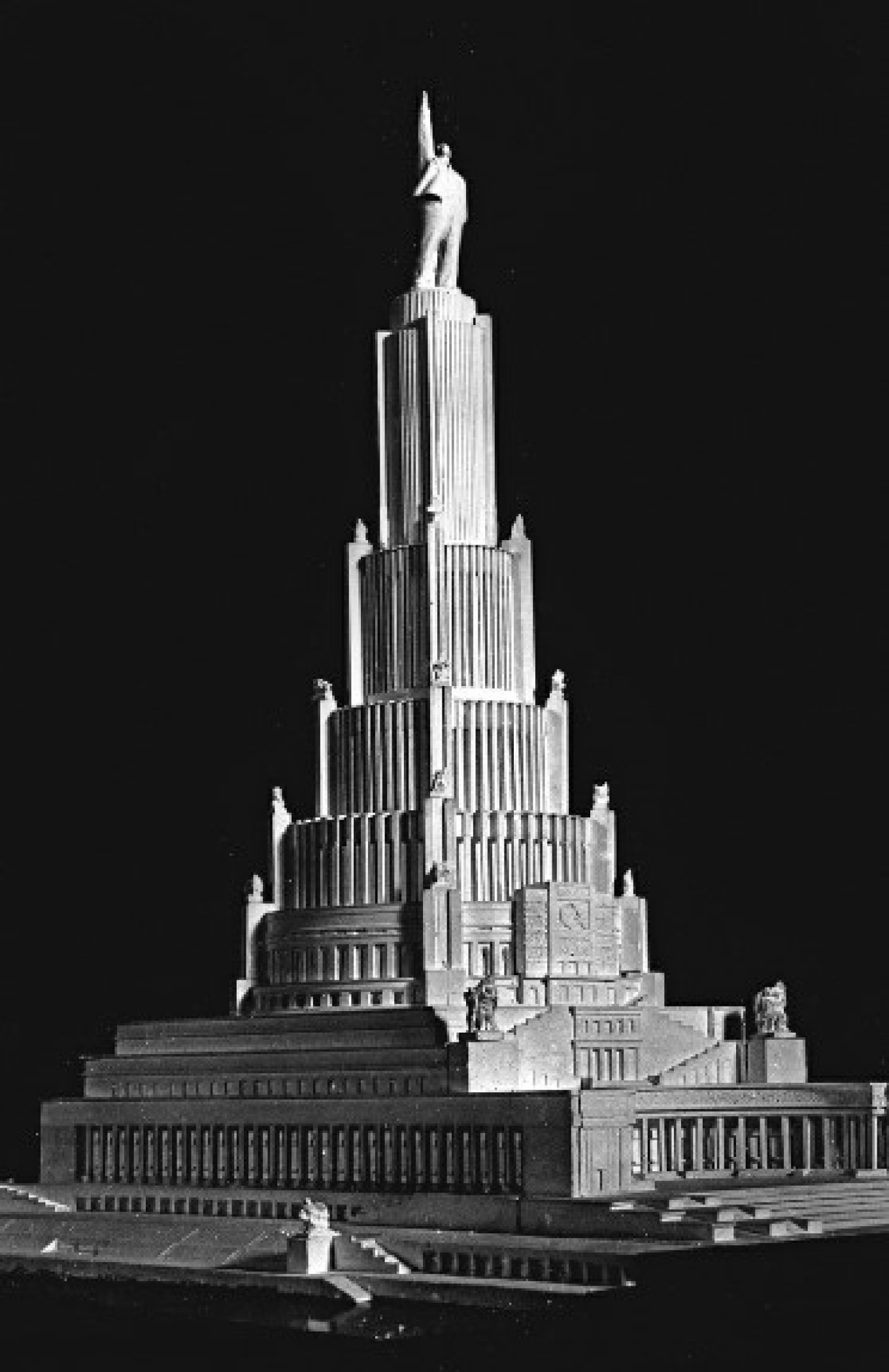
Iofan is perhaps the only architect who is most famous for what he did not build. In Chapter Four, Sudjic traces the rise and fall of the architect’s dreams for the Palace of the Soviets, a monumental structure — part seat of government, part forum for mass public spectacles — that was meant to be the tallest building in the world. This chapter includes some of the book’s most striking images, including the demolition of the Cathedral of Christ the Savior — which Stalin had decided should make way for this Soviet fantasy in stone — and a selection of Iofan’s sketches showing the various iterations of his design. After World War II halted its construction and claimed the lives of most of his team, the project “slipped away from him as he worked through six ever more dispiriting new versions.”
In the minds of most people, the term “Soviet architecture” likely conjures images of gray, imposing tower blocks — the product of a society that spurned the decadent Western world. What is perhaps most striking about “Stalin’s Architect” is that it shows how the man, who in many respects defined Moscow’s Soviet era skyline, drew inspiration from capitalist Europe and America. The Barvikha Sanatorium, in the verdant Moscow suburb of the same name, and the House on the Embankment were “clearly part of mainstream European modernism.” The Soviet pavilion at the 1937 Paris Exposition embodied Iofan’s “fascination” with New York’s Rockefeller Center. And its crowing sculpture — of an idealized Soviet man and woman holding aloft a hammer and sickle — was a socialist reinterpretation of an ancient Greek monument to the legendary Athenians Harmodius and Aristogeiton.
Iofan was not the only Soviet architect who found inspiration in the West for his monuments to socialism: Vladimir Shchuko and his partner Vladimir Gelfreikh — Iofan’s rivals-cum-partners — envisaged the Palace of Soviets as a monumental recreation of the Doge’s palace in Venice, that famous hub of early modern capitalism.
Whether one can separate the art from the artist is an eternal question. In Iofan’s case, as Sudjic writes, Iofan’s work “cannot be understood in isolation from the regime he once served.” He does not shy away from the most unsavory aspects of Iofan’s life and career, a particularly troubling example being his close friendship with Alexei Rykov, the leading Bolshevik who succeeded Lenin as premier.
The two met in 1924 when, upon Rykov’s visit to Italy, the Soviet Embassy asked Iofan to act as his interpreter. It was Rykov who introduced Iofan to the members of the Soviet elite upon whom the architect’s career would depend. Despite their long-standing relationship, Iofan stood by as his friend and patron fell victim to Stalin’s purges, continuing to serve the regime that had executed Rykov in 1938. Just one year later, he heaped praises upon his friend’s executioner: “Never before has an artist been able to devote himself in this way to an art that is placed at the service of the workers [...] as now, in the era of great Stalin.”
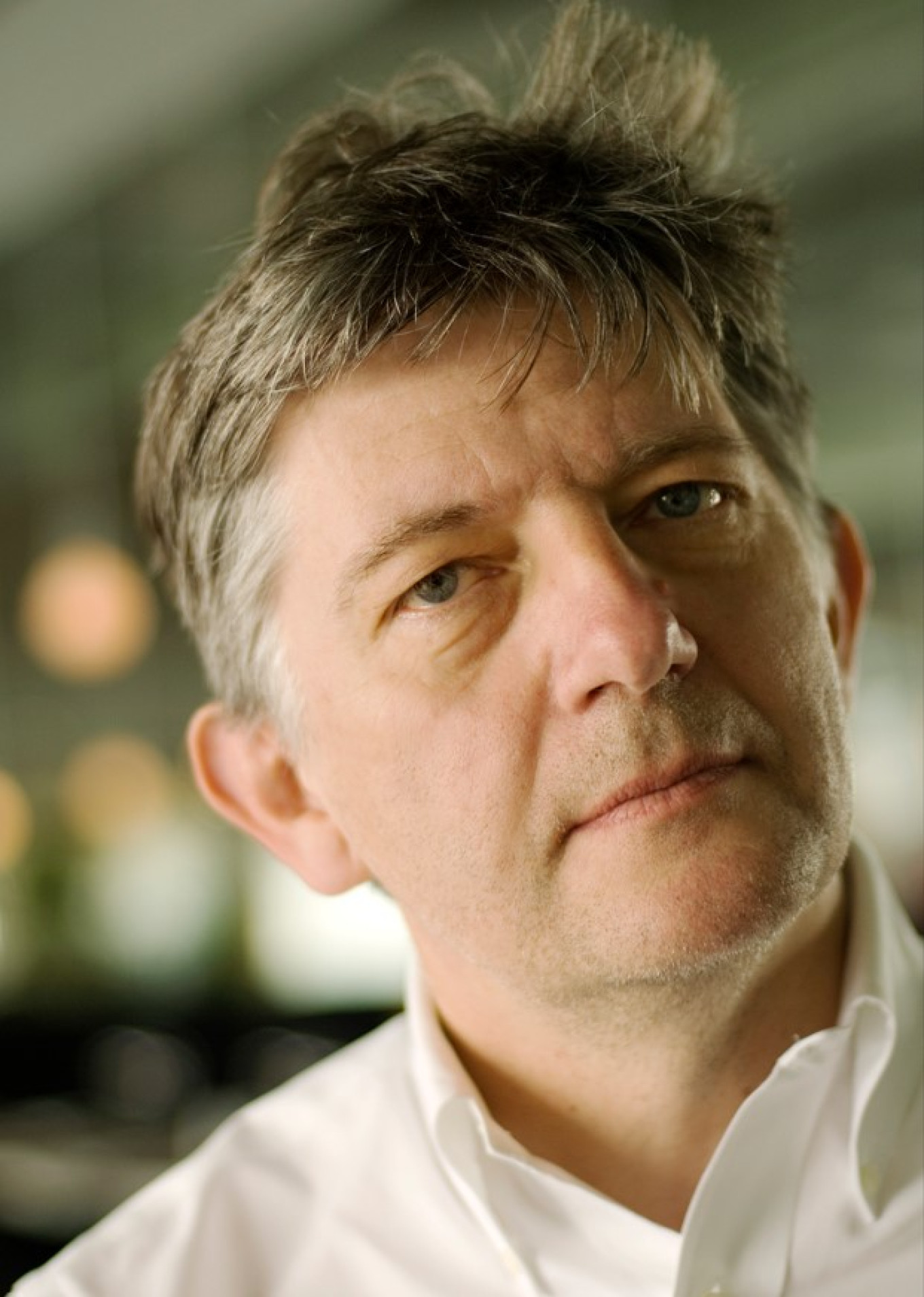
“Stalin’s Architect” — the story of one man’s “remarkable ability to survive the worst of times” and the “price of working for the monstrous Stalin” — is a book that will appeal not only to the architect enthusiast and Soviet historian, but also to the general reader who is ready to grapple with the enduring question of the relationship between art and power.
As Russia’s brutal invasion of Ukraine grinds into its sixth month, it is impossible to read Stalin’s Architect without feeling a chill down one’s spine. Iofan willingly and enthusiastically put his talent to the service of the man who orchestrated the genocidal famine in Ukraine in 1933; he stayed quiet as the regime he glorified in stone brutally repressed his friends and fellow citizens. One would be hard pressed to read of the myriad moral compromises that Iofan made — not just to survive but thrive — without feeling unsettling resonances with the present day. As in Iofan’s day, artists once again face a stark choice: serve the regime and survive, or maintain their creative freedom and risk repression. And, as Sudjic’s biography of Iofan shows us, the choice is often not the one that we might hope.
Stalin's Architect: Power and Survival in Moscow
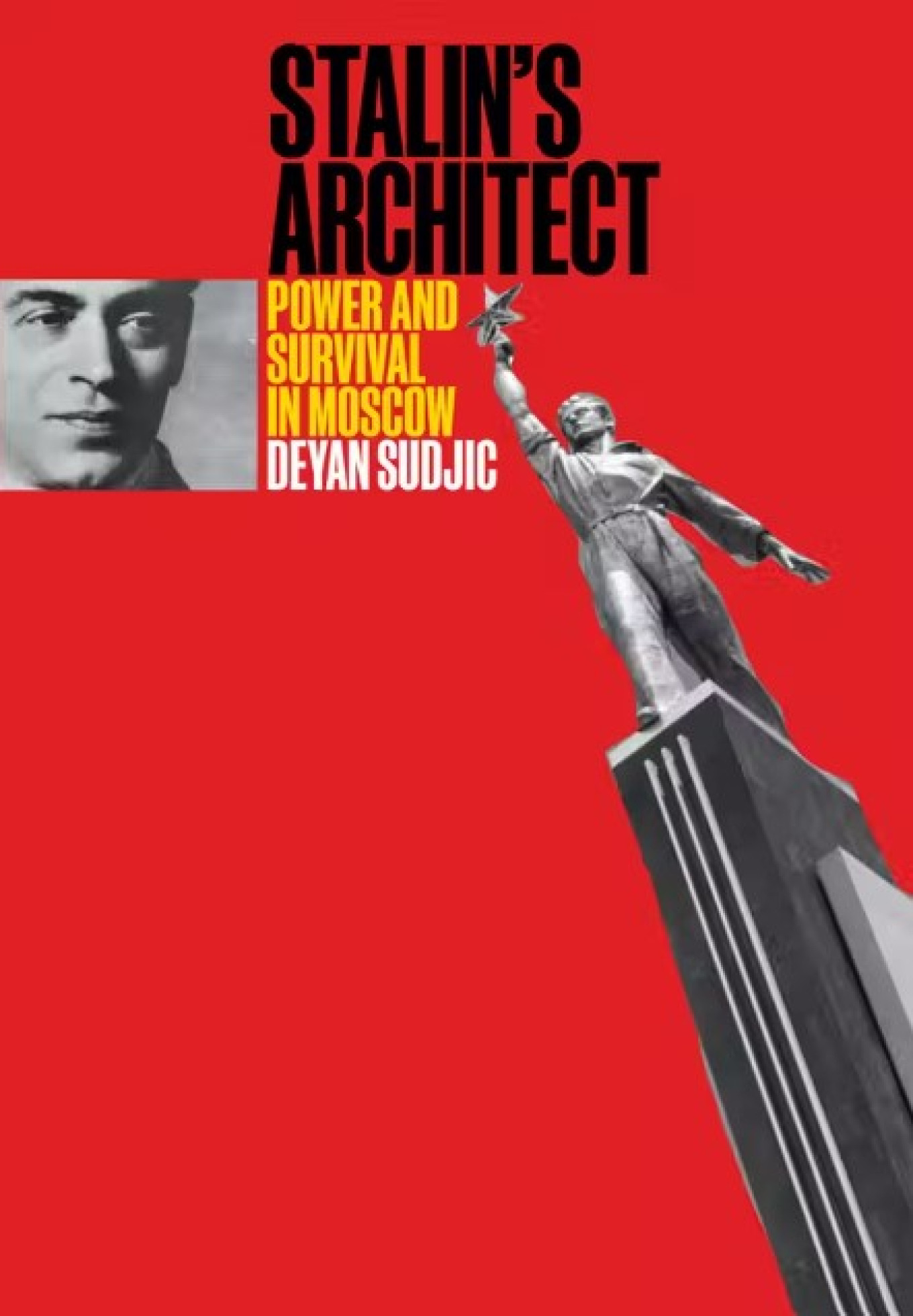
Excerpted from Chapter Four: Palace of the Soviets
Iofan coaxed the palace project, step by step, from a nebulous idea supposedly born out of Kirov’s speech into a concrete plan, and then to the messy reality of a construction site. It took six years of preparation, from producing the initial competition brief in February 1931 to devising and then staging a sequence of competitions in four rounds, before a start was finally made on digging the foundations.
Initially, Iofan had the support of his friend and patron Aleksei Rykov, who set in motion the administrative machinery that would be used to deliver the palace. But before Iofan could even start work, Rykov had been out-manoeuvred by Stalin and had lost his grip on power. The Council for the Construction of the Palace of the Soviets was set up early in 1931 to take nominal political control of the process. Its chair was Vyacheslav Molotov, recently appointed as the Soviet premier in succession to Rykov, who had been demoted to running the post office.
Helpfully for Iofan, Molotov’s private office was headed by Aron Vizner, another close friend from his time in Italy. The council members were Lazar Kaganovich, Stalin’s enforcer; Kliment Voroshilov, chair of the revolutionary military council; Konstantin Ukhanov from the Moscow Soviet; and Avel Yenukidze, who was the member in day-to-day charge until he was arrested and shot in 1937. Reporting to the council was the Directorate of Construction, a team of technical experts including Iofan himself; and an advisory group made up of politicians, scientists and assorted cultural figures. A similar group, with many of the same members, had overseen the building of Lenin’s tomb.
In the early days of the project Yenukidze worked closely with Iofan, as he had previously done on the House on the Embankment. Iofan tabled a draft brief, a timetable and a multi-stage competition scheme, all of which were adopted by the Construction Council in February 1931. Shortly afterwards he was given the unambiguous title of chief architect. As well as organizing the competition, his role, according to the council, was ‘on the basis of the chosen projects, to prepare both preliminary and final designs along with working drawings with cost estimates for all types of construction and specialized specialized work’. Significantly, there was no mention of the role of the competition winner. Iofan had learned some lessons from his uncomfortable experiences with the House on the Embankment project, when Rykov’s unilateral decision to give him the job had drawn sharp public criticism. He was determined that the charge of failing to follow proper procedure would not be levelled against him again. This time he planned to have not just one competition, but four; and he also wanted to ensure that his role would not be limited to the realization of another architect’s ideas. Mikhail Kryukov was appointed as head of construction to take care of the administrative details. Throughout the process, Iofan showed himself to be both an effective strategist – encouraging the Soviet hierarchy to go ahead and build the palace, and devising the steps by which it would be realized – and a skilful tactician. He outmanoeuvred Kryukov, who, according to the historian Katherine Zubovich, unsuccessfully appealed to Molotov to have him dismissed, and he survived the political carnage that would claim the lives of Kryukov and Yenukidze.
It was Stalin himself who decided on three of the building’s most crucial defining aspects: its location, its size and the inclusion of a massive representation of Lenin. Iofan evidently never challenged him, although he must have known that each of these decisions would make the job of realizing the palace more difficult – perhaps even impossible. The dictator’s first public intervention came after walking along the banks of the Moskva with Iofan on a June morning in 1931. As Iofan later recounted to Isaak Eigel:
'Comrade Stalin, together with the building committee of the palace chaired by Comrade Molotov, visited the grounds of the Church of Christ the Saviour. A large group of Moscow architects was in attendance. The choice of site was confirmed that very same day. I believe Comrade Stalin was attracted by its excellent situation at the centre of the city near to the Moskva River and the Kremlin. Comrade Stalin carefully inspected the site and listened attentively to the views of the assembled architects. Many architect comrades were wary of the area’s uneven configuration, and its comparatively small size.'
Iofan knew – from bitter experience with the House on the Embankment on the other side of the river – how difficult it would be to excavate deep foundations in waterlogged clay. He was well aware that building on the site he had proposed would be much more straightforward. Nevertheless, as a result of Stalin’s visit, just before the public competition was announced the site for the palace was switched from the two blocks Iofan had envisaged – between Okhotny Ryad, Tverskaya Street and Bolshaya Dmitrovka Street, near the Kitai-gorod wall and Red Square – to the site of the cathedral. Iofan met Molotov in his office the day after the leader’s visit, when the Construction Council formally agreed to the demolition of the largest church in Moscow.
The Cathedral of Christ the Saviour, designed by Konstantin Thon, was the product of a long-delayed pledge by Alexander I to give thanks to the Almighty for Napoleon’s defeat in 1812. It had been completed only in 1883. In the years after the revolution, the church became a centre of opposition to the Soviets and the regime responded by expelling the clergy from the building, ending its use as a place of worship and leaving it empty and locked. Shifting the Palace of the Soviets to such a conspicuous site was a gesture that completely transformed the project. Clearly this was not going to be just another conventional complex of buildings – it had to be a national monument, a credible replacement for one of Russia’s most prominent buildings.
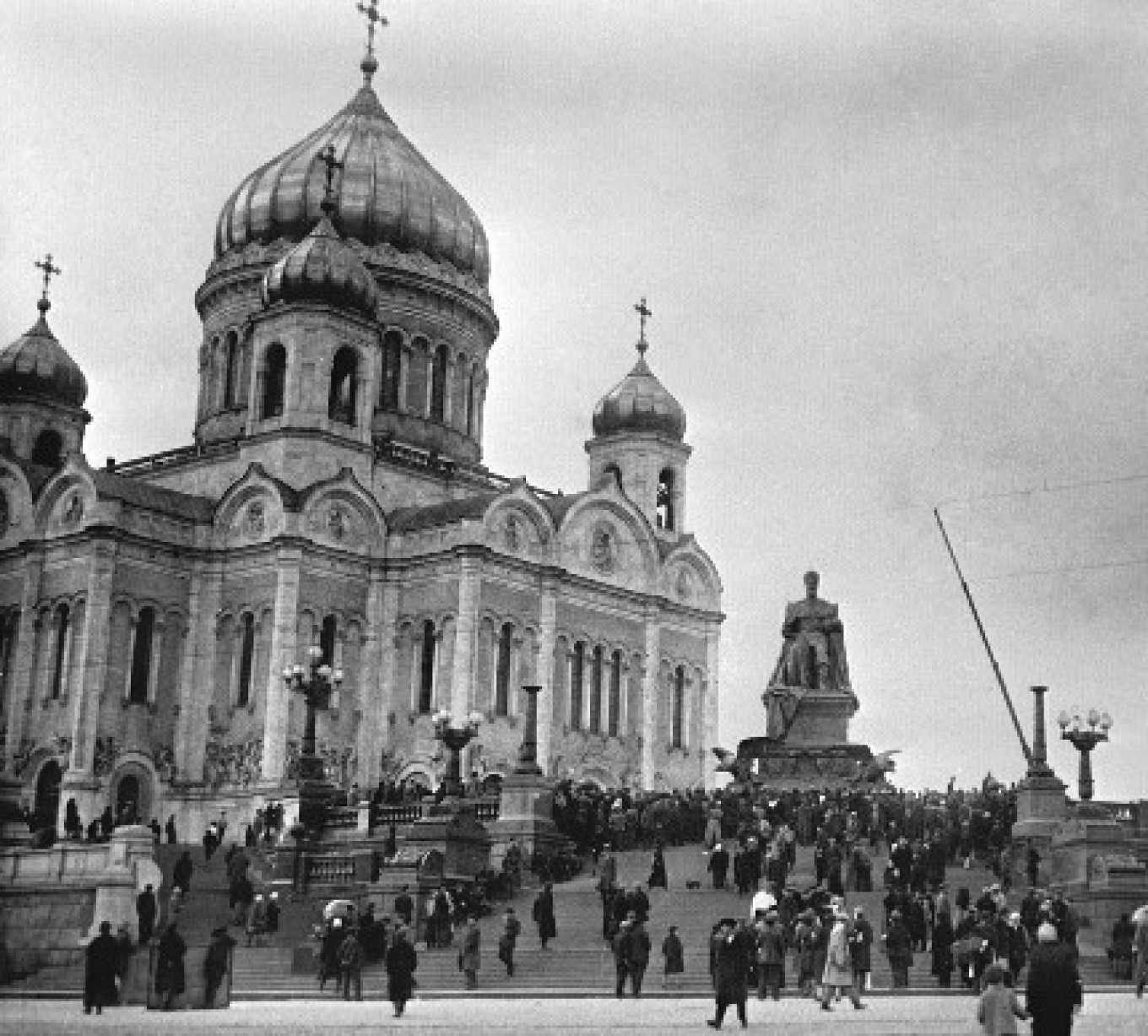
Moscow’s largest church, the Cathedral of Christ the Saviour, was completed in 1883 to celebrate the Russian victory over Napoleon. Beheaded and dismantled in 1917, the neighbouring monument to Tsar Alexander III (at right) was an early victim of Bolshevik iconoclasm.
There were protests from those still brave enough to challenge Stalin’s attack on religion, and from those who saw the building as a valuable architectural and artistic achievement. The daily newspaper Izvestiya, however, refused to publish any letters criticizing the destruction of the church. Iofan was well aware of the controversy, and both he and Olga privately had doubts about the suitability of the site. But in public, he took the view that there were no grounds to preserve it on the basis of architectural merit. Just as, despite his years of absorbing the lessons of architectural history in Rome, he had readily attempted to demolish a 17th-century church some weeks earlier in order to make room for a kindergarten at the House on the Embankment, he now coolly dismissed the old cathedral. He described it as ‘huge and cumbersome, looking like a cake, or a samovar. It overwhelmed the surrounding houses and the people in them with its official, cold, lifeless architecture, a reflection of the talentless Russian autocracy and the highly placed builders who had created this temple for landowners and merchants. The proletarian revolution is boldly raising its hand against this cumbersome edifice which symbolizes the power and the taste of the lords of old Moscow.’
Demolition took five months to complete, with a highly theatrical finale in December 1931 when strategically placed charges of dynamite brought the remaining structure down. The secret police made sure that the gangs of workmen charged with stripping the gold from the domed roof handed over all spoils to the state. (Walter Duranty, Moscow correspondent of the New York Times and one of the more useful of Stalin’s ‘useful idiots’, claimed that it was only brass.) Some of the marble and granite from the exterior was salvaged for reuse in the building of the Lenin Library. The best of the icons and artworks were allocated to Moscow’s museums or sold to raise foreign currency, but many pieces of statuary and commemorative stained glass were deliberately smashed to pieces.
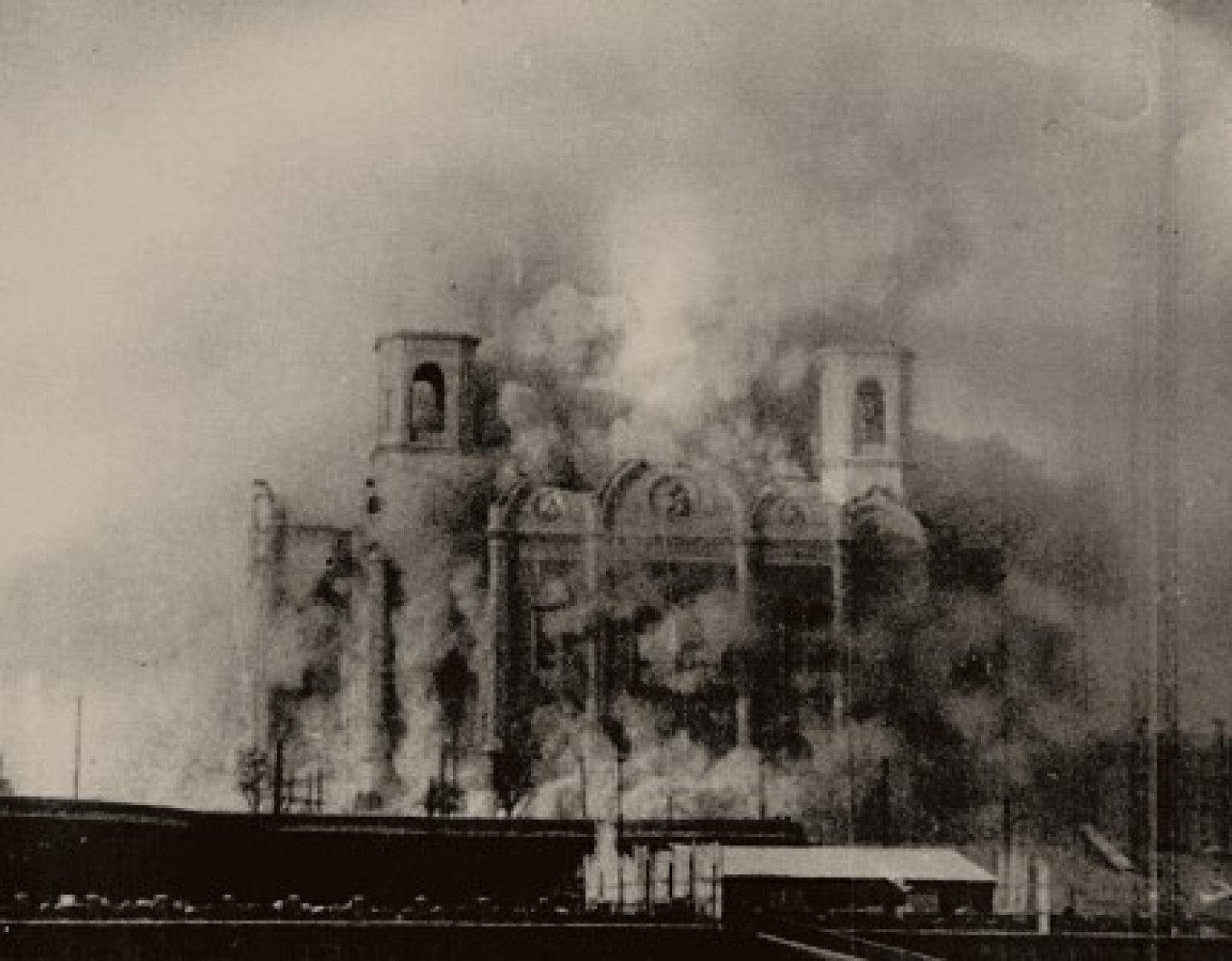
Stalin had the Cathedral of Christ the Saviour demolished in 1931 to make room for the Palace of the Soviets. Its destruction was a huge undertaking, involving hundreds of labourers and horses, and a light railway to cart away the rubble. The explosive finale saw the carefully orchestrated use of dynamite to bring down the last fragments.
Destroying the cathedral was a massive undertaking requiring 100 dumper trucks, 200 draft horses, 2,000 labourers and a specially constructed light railway. The Construction Council calculated that 500 million bricks, reinforced by an iron frame, had gone into the structure, but the first step in dismantling it was to strip off 600 cartloads of valuable marble for reuse. Eight three-car freight trains, operating throughout the day for three months, were then employed to remove all the debris. Screened from public view, workmen used chains to pull down monumental representations of Russian saints from the cathedral’s façades. They could be glimpsed lying on the ground in piles of rubble, rather like huge images of Ozymandias lying in the sands of the desert, alongside a snow-covered avalanche of dislodged bricks.
Excerpted from “Stalin’s Architect: Power and Survival in Moscow. Boris Iofan (1891-1976)” by Deyan Sudjic, published in the U.K. Thames & Hudson Ltd and in the U.S. by MIT Press. Copyright © 2022 Deyan Sudjic. Used by permission. All rights reserved. Footnotes have been removed to ease reading. For more information about the author and this book, see the publisher’s site here.
“Stalin’s Architect” has been shortlisted for the 2022 Pushkin House Book Prize.
A Message from The Moscow Times:
Dear readers,
We are facing unprecedented challenges. Russia's Prosecutor General's Office has designated The Moscow Times as an "undesirable" organization, criminalizing our work and putting our staff at risk of prosecution. This follows our earlier unjust labeling as a "foreign agent."
These actions are direct attempts to silence independent journalism in Russia. The authorities claim our work "discredits the decisions of the Russian leadership." We see things differently: we strive to provide accurate, unbiased reporting on Russia.
We, the journalists of The Moscow Times, refuse to be silenced. But to continue our work, we need your help.
Your support, no matter how small, makes a world of difference. If you can, please support us monthly starting from just $2. It's quick to set up, and every contribution makes a significant impact.
By supporting The Moscow Times, you're defending open, independent journalism in the face of repression. Thank you for standing with us.
Remind me later.



